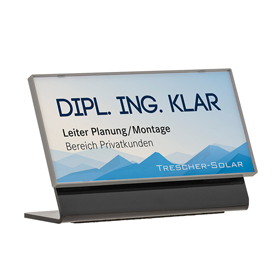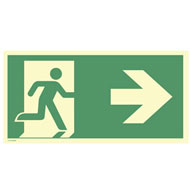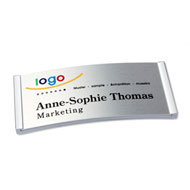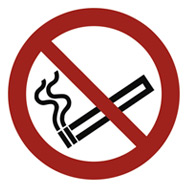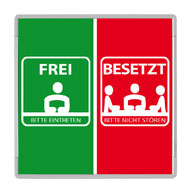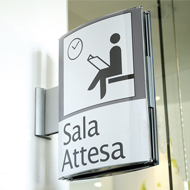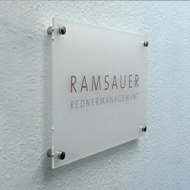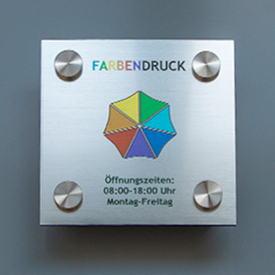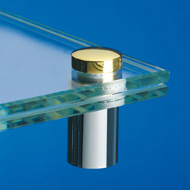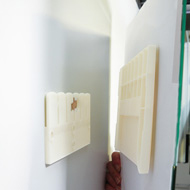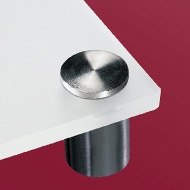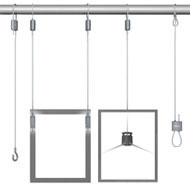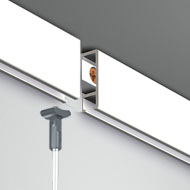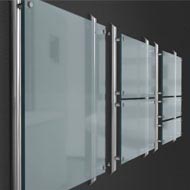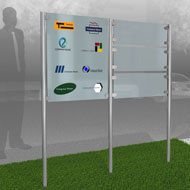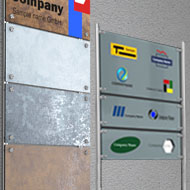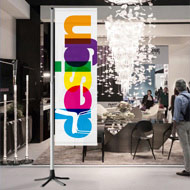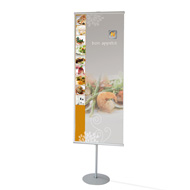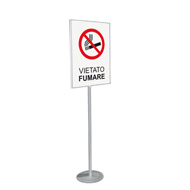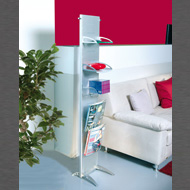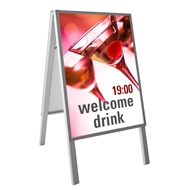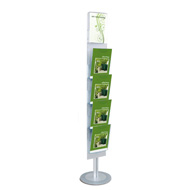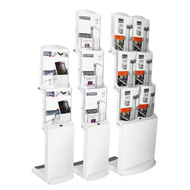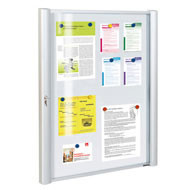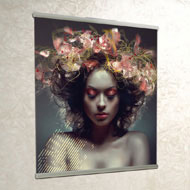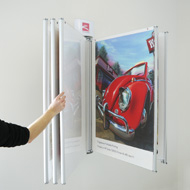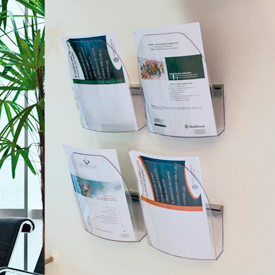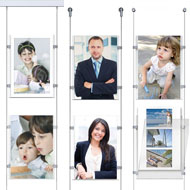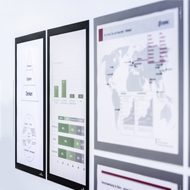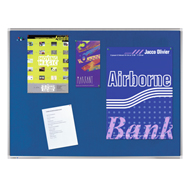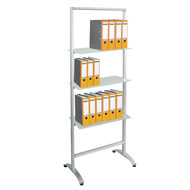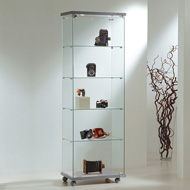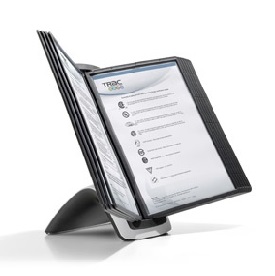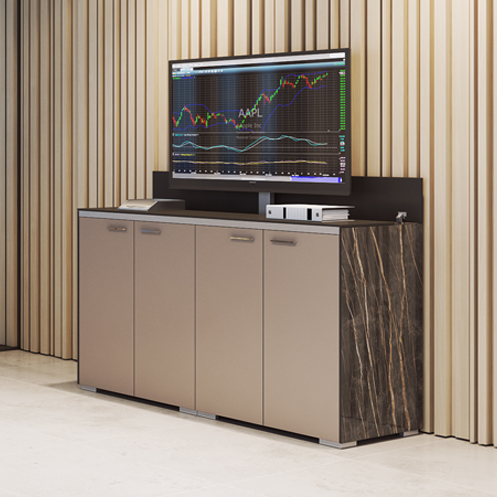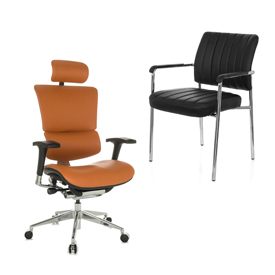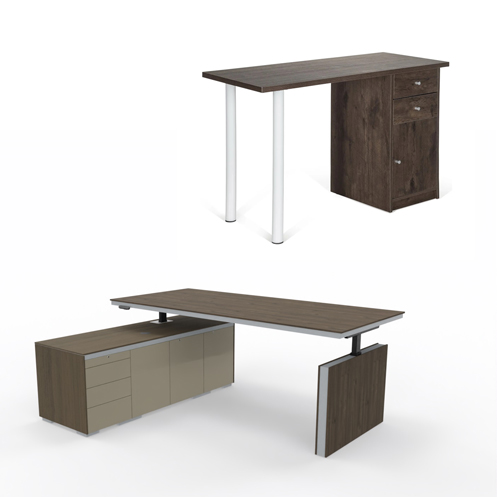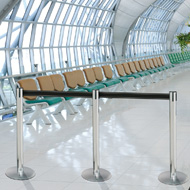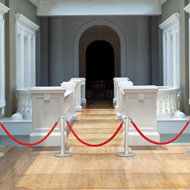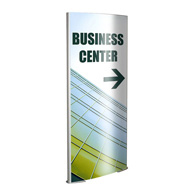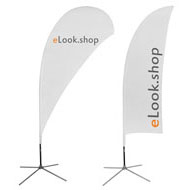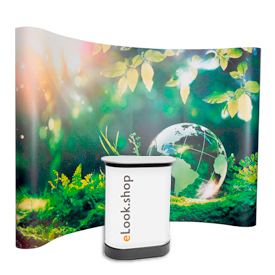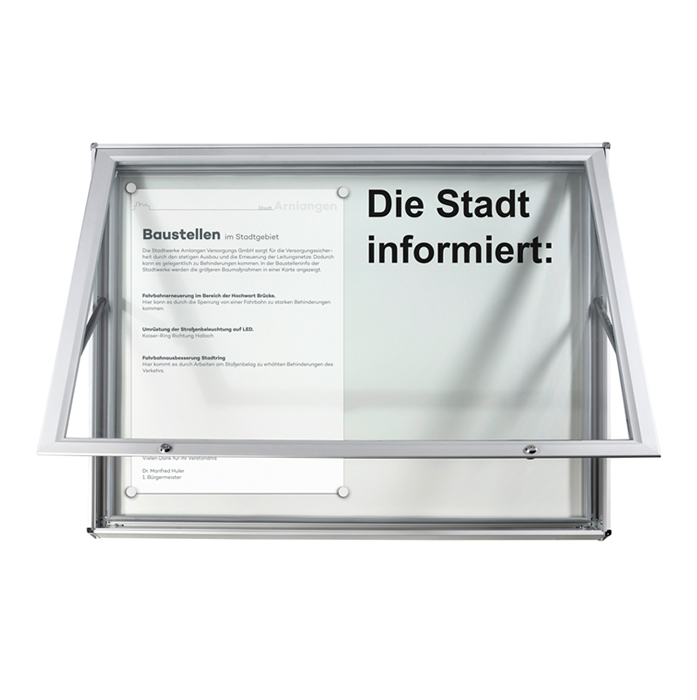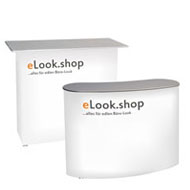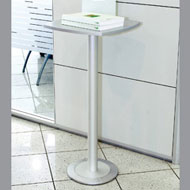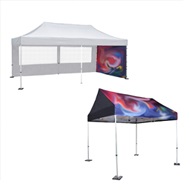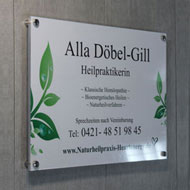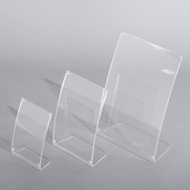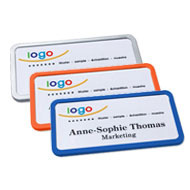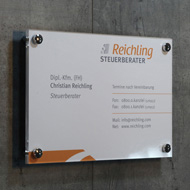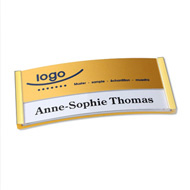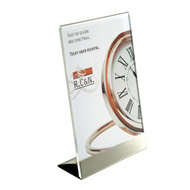Create a customer path in the store – this is how you guide customers to purchase!
Wednesday, November 1, 2023
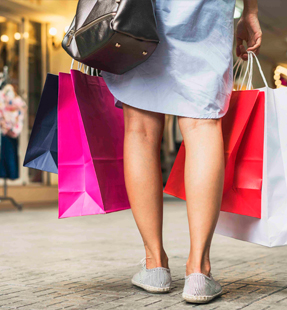 Customers' interest in purchasing one or more of your products begins before they even enter the store. The customer journey therefore starts directly at the shop window or even at the customer stopper. When designing your store, it is therefore important to create a well-thought-out customer journey that ultimately leads to your customers seeing, trying on and purchasing the products. Here you will find all the important tips about customer journeys and their development.
Customers' interest in purchasing one or more of your products begins before they even enter the store. The customer journey therefore starts directly at the shop window or even at the customer stopper. When designing your store, it is therefore important to create a well-thought-out customer journey that ultimately leads to your customers seeing, trying on and purchasing the products. Here you will find all the important tips about customer journeys and their development.The shop window as bait – where it all begins
In order for your customers to enter the store, they first need bait and this is already placed in front of the store door. There are different ways to arouse your customers' interest. It often even makes sense to combine several of these variants with each other.1. The window design
It is not for nothing that successful stores attach great importance to the shop window design in addition to the shop equipment . In the shop window, worlds and representations are created that are intended to attract attention. It's about arousing the customer's desire to integrate exactly the products shown here into their own lives. Thematic shop windows are particularly popular. What topics these are are always different. You can orient yourself according to the seasons. This is especially useful if you run a fashion store. Since fashion itself always matches the season, the shop windows here are a canvas that you can design yourself.But you might also want to take up other themes, such as colors or statements. It is important that you have variety to offer your customers. Nobody wants to walk past the same shop window day after day. Try to break new ground and maybe take a little risk by trying out a new strategy. This creates eye-catchers that invite your customers into the store.
2. Outdoor signs on your store
Many customers would like to know what they can expect before entering a store. Here, outdoor signs are a very good solution for disseminating this information in a compact manner. Maybe it's summer sales or winter sales. You may be offering current three pieces for the price of two pieces or have received a new collection. All of this information is important for your customers. But it is also relevant how they are presented. It has been shown that very intrusive colors and fonts are perceived as negative. Your customers don’t want to feel like they’re being yelled at. They want to be sure at all times that they have made all decisions themselves.3. Customer stoppers as the first stop
If you have the opportunity to set up a customer stopper, this is recommended. Customer stoppers are often placed in front of the store, but it is also very popular to set them up a little further away from the store. This gives you the opportunity to reach potential customers who can't even get past the shop window. In order to draw attention to your offers, it is important to design a customer stopper. At a glance, potential customers should be able to see how they will benefit from visiting your store.The customer stopper or the shop window is the start of the customer routes. The first decisions are already being made here.
Tempting entrance design – the way over the threshold
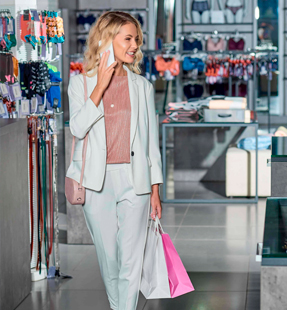 Put yourself in your customers’ shoes. What would you want when you walked into a store? An inviting entrance area is indispensable in the shop interior. Here, customers should already notice that they are welcome and that you are happy to welcome them to your store. So welcome your customers. This can be done in very different ways. The Welcome Manager is actually a classic, but it can hardly be found today. A few years ago it was indispensable. Many operators have an employee positioned at the door to hold the door open and say a few friendly words.
Put yourself in your customers’ shoes. What would you want when you walked into a store? An inviting entrance area is indispensable in the shop interior. Here, customers should already notice that they are welcome and that you are happy to welcome them to your store. So welcome your customers. This can be done in very different ways. The Welcome Manager is actually a classic, but it can hardly be found today. A few years ago it was indispensable. Many operators have an employee positioned at the door to hold the door open and say a few friendly words.But it is also possible to greet customers in other ways. A clean carpet in the entrance area, friendly and pleasant lighting as well as a gentle and calming scent are just some of the ideas that can be implemented here.
Depending on the type of business, it is also a good idea to offer baskets in which the selected products can ultimately be placed. This means your customers have their hands free to look at other versions and stroll comfortably through the aisles.
The entrance area is also ideal for getting started with a control system. Especially in larger stores, it makes sense to take customers by the hand and show them what there is to discover. This is interesting both for customers who just want to shop around and for people who have a goal and are looking for a specific product.
The entrance area is the second section of the customer journey into your store. From here, your customers either move on feeling good or feeling less good. This also influences how open they are to the products and a purchase.
Set clear main traffic routes in the store
Your customers have now arrived in the store. Now is the time to choose a path. Customer journeys are very different. A helpful basis for compiling the main traffic routes is a route analysis. The route and the furnishings in your store should be based on the behavior of your customers. Did you know that most customers choose the counterclockwise route? It is also known that people in a store look less to the left and more to the right. In many stores, sales areas are currently being built in the middle of the store. However, customers pay significantly less attention to these than the peripheral areas. These are findings from various route analyses.When you put together the main traffic routes, you should also take into account that there are other sales areas that are considered to be negative for sales. These are the areas around the entrance, at emergency exits, at elevators and also in the area of stairs or escalators. A look at the competitors in the industry shows how the main routes are structured here.
Successful concepts have developed over the years in the respective retail sectors. Therefore, there are different types of customer management, not all of which suit your business. However, if you focus on the needs of your target group, you have a good chance of placing the right product groups on the walkways in exactly the right place.
Fashion markets rely most on the arena principle. There are main traffic routes that lead to different arena areas. In the individual areas there are themed goods, such as shoes, jackets, trousers or shirts. In order to optimize the main traffic routes later, it is helpful to continue measuring visitor frequency.
The route you create influences the experience your customers have in your store. It therefore also has a direct impact on customer satisfaction. Positive routing is therefore particularly important in order to increase the sales rate. It guides, but does not limit. Your customers want the opportunity to use alternatives and shortcuts. These offers are particularly relevant if you have a high frequency of visitors to your store. Every customer in your store wants to decide for themselves where they go. In addition, shortcuts ensure that your customers always find a way.
Keep an eye on clarity
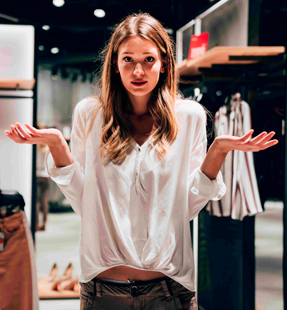 The route should always be designed with the aim of ensuring that it remains clear. This means that your customers should get a good overview of the product range. At the same time, the control system should not contain too much information. This can quickly lead to sensory overload. This also applies to the sales areas. The paths should lead past well-maintained and clearly designed sales areas. Your customers should be able to reach every product themselves – even at heights. It is not recommended to keep changing the furnishings of the sales areas. This can unsettle your existing customers and cause frustration.
The route should always be designed with the aim of ensuring that it remains clear. This means that your customers should get a good overview of the product range. At the same time, the control system should not contain too much information. This can quickly lead to sensory overload. This also applies to the sales areas. The paths should lead past well-maintained and clearly designed sales areas. Your customers should be able to reach every product themselves – even at heights. It is not recommended to keep changing the furnishings of the sales areas. This can unsettle your existing customers and cause frustration.Helpful points for the main traffic routes
✔
People guidance systems✔
Signage✔
HotspotsThe classics are the people guidance systems. They can be found, for example, on escalators and elevators, but also at the entrance or above the individual department areas. The people guidance systems contain information about where which products are located.
The art of visual seduction
People receive a variety of visual impressions every day, which are often not even consciously perceived, but which nevertheless guide their own actions. Many purchase decisions are made spontaneously – influenced by a visual seduction. A good example of this is the fruit and vegetable department in the supermarket. Many operators work here with a special light so that the products shine in strong colors. The surface shines when slightly moistened. Anyone who actually just wanted to buy bananas sees the apples and grabs them anyway. These are impulse purchases that arise from visual seduction.Visual seduction can arise in different ways. Both Colors and Songs and Symbols and Font Colors are options you can work with. But scents shouldn't be underestimated either, and that doesn't just apply to food. People associate certain scents with events or wishes. Coconut and vanilla represent the beach and vacation. The scent of pine brings back memories of Christmas and winter. Emotional associations arise that create the desire to absolutely have to have a product.
Font colors are used to draw attention to special offers. Red is seen as a signal color, but also symbolizes danger. Therefore, careful consideration must be given to whether it is the right color to use in your business. Green is the color of hope and happiness, it is usually associated with positive thoughts. This way you can decide which colors to use. This also applies to symbols and fonts.
Make sure that the visual seduction effects you use also fit the theme of your products. There is a complex system behind the art of visual seduction. A strategy is the beginning. However, this does not mean that it will work right from the start.
Similar to a route analysis, it is important to observe the effect and make small adjustments. Observe how your customers react, which colors, shapes and even smells or songs are well received and which products are particularly widely purchased. This is how you create the right visual seduction for your target group.
The integration of a bargain avenue
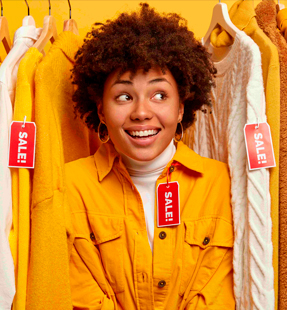 The integration of a so-called bargain alley is used by many areas in retail. It is an area in the store where offers and bargains are grouped together. Many people are always looking for cheap offers. You want to feel like you got a good deal on your purchase. Reduced items are among the products in the store that receive a lot of attention. Receive significantly more for an amount than would originally have been the case - special offers are popular and also a good basis for a positive feeling. With a positive feeling, there is a higher probability that interest in products outside of the bargain aisle will also increase.
The integration of a so-called bargain alley is used by many areas in retail. It is an area in the store where offers and bargains are grouped together. Many people are always looking for cheap offers. You want to feel like you got a good deal on your purchase. Reduced items are among the products in the store that receive a lot of attention. Receive significantly more for an amount than would originally have been the case - special offers are popular and also a good basis for a positive feeling. With a positive feeling, there is a higher probability that interest in products outside of the bargain aisle will also increase.One of the goals in retail is to make customers aware of what they actually need and want. The bargain alley is also very suitable here. You can bring together products from different categories on the sales tables or on the shelves. Because the products have one thing in common: Their prices are reduced. While your customers may be looking for a jacket that they wanted to buy anyway, they can also find matching trousers and a top or accessories here. Impulse purchases are quickly made that would otherwise not have happened.
It is a feat to design a bargain avenue in such a way that it is not too intrusive but still catches the eye. Visual seduction is also an issue here. In addition, the bargain avenue should be visible and accessible from the main paths. Your customers want to have the chance to see directly what they are getting here. A clear design of the bargain alley is therefore a must.
Don't forget safety and emergency exit signs
When it comes to designing customer routes, the focus is on how it is possible to generate the highest possible sales. The paths are planned according to where the potential buyers particularly focus their attention. There are main paths and there are side paths. However, it should not be underestimated how concerned buyers are about their own safety. Security has different facets.It should always be clear where the exit is and where the cash registers are. When planning customer routes, it is helpful to show the direction at regular intervals. This can happen via arrows on the floor or on the walls, but also through large signs above the checkout area.
In addition, emergency exits should be identified and signposted. Of course, it is generally assumed that the emergency will not occur. Nevertheless, your customers should feel safe and this also works because the emergency exits are well signposted. There is classic signage here that ensures that your customers can identify the license plates.
Conclusion: The importance of customer routes is high
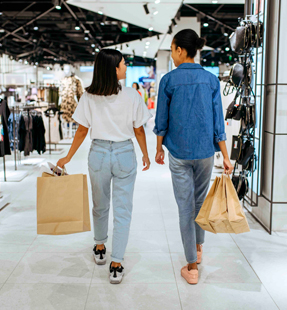 The customer routes are the areas through which your customers are directed to the products. Even if your customers don't know this, they will be informed and influenced by the channels. The design of customer routes can be implemented through various aspects. You can work with visual effects. Also take advantage of special offers. By regularly analyzing customer movements, you can see whether current customer routes match your target group. Don't make changes too often to avoid confusing your customers.
The customer routes are the areas through which your customers are directed to the products. Even if your customers don't know this, they will be informed and influenced by the channels. The design of customer routes can be implemented through various aspects. You can work with visual effects. Also take advantage of special offers. By regularly analyzing customer movements, you can see whether current customer routes match your target group. Don't make changes too often to avoid confusing your customers.
